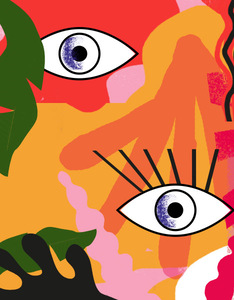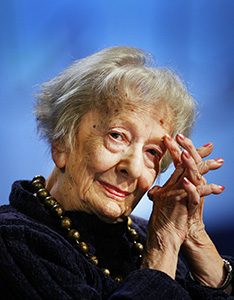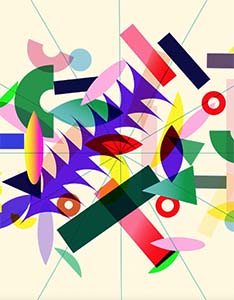Polish installation "Greenhouse Silent Disco" at the Milan Triennale
Press release, 12/07/2022
Polish installation "Greenhouse Silent Disco" at the Milan Triennale
The Adam Mickiewicz Institute and the Wrocław Museum of Architecture will present the “Greenhouse Silent Disco” installation at the 23rd Milan Triennale of Decorative Arts and Contemporary Architecture. The exhibition will be on display from 15 July to 11 December.
The motto of the Milan Triennale, one of the most important international events dedicated to design and architecture, is "Unknown unknowns. An introduction to mysteries". Its main idea is to open a discussion about the challenges related to the future of our planet and to reflect on what still remains unknown in the contemporary world.
The "Greenhouse Silent Disco" exhibition, curated by Małgorzata Devosges-Cuber and Michał Duda, fits in with the Triennale's theme by referring to romantic concepts of sensual, bodily experience and empathy with nature. The project was inspired by research carried out by Professor Hazem Kalaji, a distinguished plant physiologist from the Faculty of Agriculture and Biology at the Warsaw University of Life Sciences. They developed a method to monitor the state of individual plants and entire ecosystems.
The installation, designed by Barbara Nawrocka and Dominika Wilczyńska (Miastopracownia), takes the form of a greenhouse filled with plants, enabling direct contact between humans and plants. It is equipped with digital sensors connected to computer systems, which will continuously monitor and record everything that the plants "say", i.e. how they react to specific needs and variables, such as human presence or changing weather conditions outside. The plants’ "Speech" will be understood through the changing colours of lights, as well as sounds generated by a computer system.
"The greenhouse of the future is a disco. The LED lights change to blue, red and white depending on needs: for example, when it is cloudy or rainy outside the greenhouse," explains Professor Hazem Kalaji.
The concept of reactivating the Romantic approach to nature is part of the ongoing Year of Polish Romanticism.
"In Romanticism, nature loses its illustrative function and becomes an instrument of cognition. Man becomes part of nature, and nature itself becomes the way to get to know the world. The Romanticists believed that only in nature can man truly be himself. So we start with whether it is possible to design in such a way that draws knowledge from plants. And it turns out that you can". - convinces Michał Duda, deputy director for programme affairs at the Wrocław Museum of Architecture.
The exhibition is curated by Małgorzata Devosges-Cuber and Michał Duda - authors of numerous design and architecture exhibitions and publications, including "Three beginnings, 1918/1945/1989". The exhibition’s architecture was designed by Barbara Nawrocka and Dominika Wilczyńska, who form the Miastopracownia duo. The scientific concept was created by Prof. Hazem Kalji from the Faculty of Agriculture and Biology at the Warsaw University of Life Sciences. The visual identity of the Polish pavilion was prepared by Nikola Choleva in collaboration with Magdalena Heliash.
The installation is an initiative of the Adam Mickiewicz Institute in cooperation with the Wrocław Museum of Architecture. The project is co-financed by the Ministry of Culture and National Heritage.
The Adam Mickiewicz Institute is a national cultural institution established in 2000. The Institute's aim - to build lasting interest in Polish culture worldwide - is pursued in cooperation with foreign partners and through international cultural exchange in dialogue with recipients, in line with the principles of Polish foreign policy. As of 2022, the Institute has completed projects in over 70 countries on six continents. The Adam Mickiewicz Institute is organised by the Ministry of Culture and National Heritage.
The Museum of Architecture in Wrocław is the only museum in Poland and one of the oldest in the world dedicated entirely to architecture. Drawing on its rich collections and research, the museum implements programmes and events exploring the themes of broadly understood design, the history of architecture and its significance in the changing present. It prepares exhibitions and publications on ancient and contemporary architecture and its relationship with other art and social activity fields


